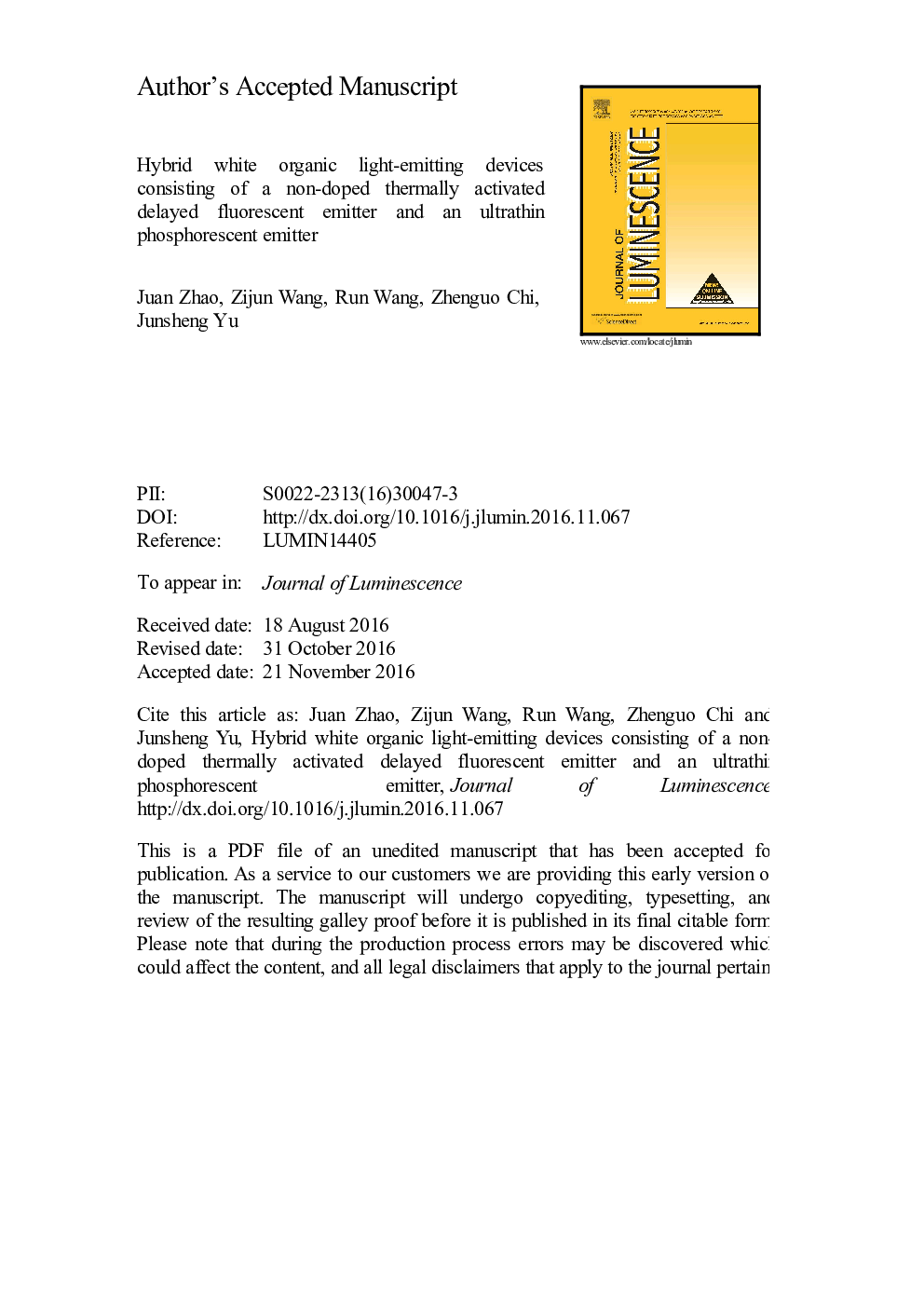| کد مقاله | کد نشریه | سال انتشار | مقاله انگلیسی | نسخه تمام متن |
|---|---|---|---|---|
| 5398114 | 1505877 | 2017 | 15 صفحه PDF | دانلود رایگان |
عنوان انگلیسی مقاله ISI
Hybrid white organic light-emitting devices consisting of a non-doped thermally activated delayed fluorescent emitter and an ultrathin phosphorescent emitter
دانلود مقاله + سفارش ترجمه
دانلود مقاله ISI انگلیسی
رایگان برای ایرانیان
موضوعات مرتبط
مهندسی و علوم پایه
شیمی
شیمی تئوریک و عملی
پیش نمایش صفحه اول مقاله

چکیده انگلیسی
Hybrid white organic light-emitting devices (OLEDs) are fabricated by employing non-doped emitting layers (EMLs), which are consisted of a blue thermally activated delayed fluorescent (TADF) emitter 9,9-dimethyl-9,10-dihydroacridine-diphenylsulfone (DMAC-DPS) and an ultrathin yellow iridium complex bis[2-(4-tertbutylphenyl)benzothiazolato-N,C2â²] iridium (acetylacetonate) [(tbt)2Ir(acac)]. With thickness optimization of DMAC-DPS, a white OLED achieves maximum current efficiency, power efficiency and external quantum efficiency of 34.9Â cd/A, 29.2Â lm/W and 11.4%, respectively, as well as warm white emission with relatively stable electroluminescence spectra. The results suggest that, bipolar charge carrier transport property and concentration independent property of DMAC-DPS, charge carrier trapping effect of the ultrathin (tbt)2Ir(acac), and balanced self-emission process and energy transfer process between DMAC-DPS and (tbt)2Ir(acac), contribute to high device performance.
ناشر
Database: Elsevier - ScienceDirect (ساینس دایرکت)
Journal: Journal of Luminescence - Volume 184, April 2017, Pages 287-292
Journal: Journal of Luminescence - Volume 184, April 2017, Pages 287-292
نویسندگان
Juan Zhao, Zijun Wang, Run Wang, Zhenguo Chi, Junsheng Yu,